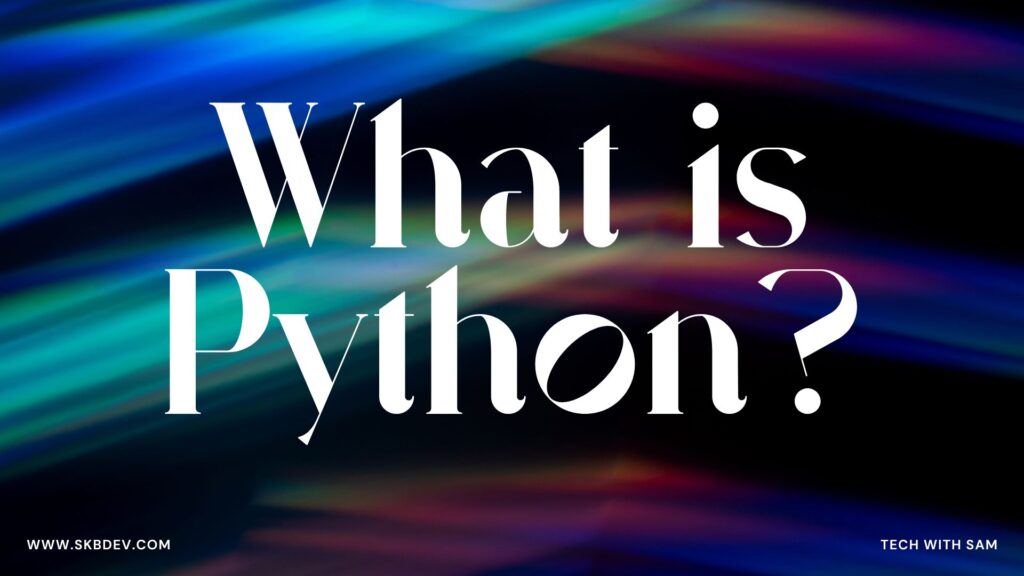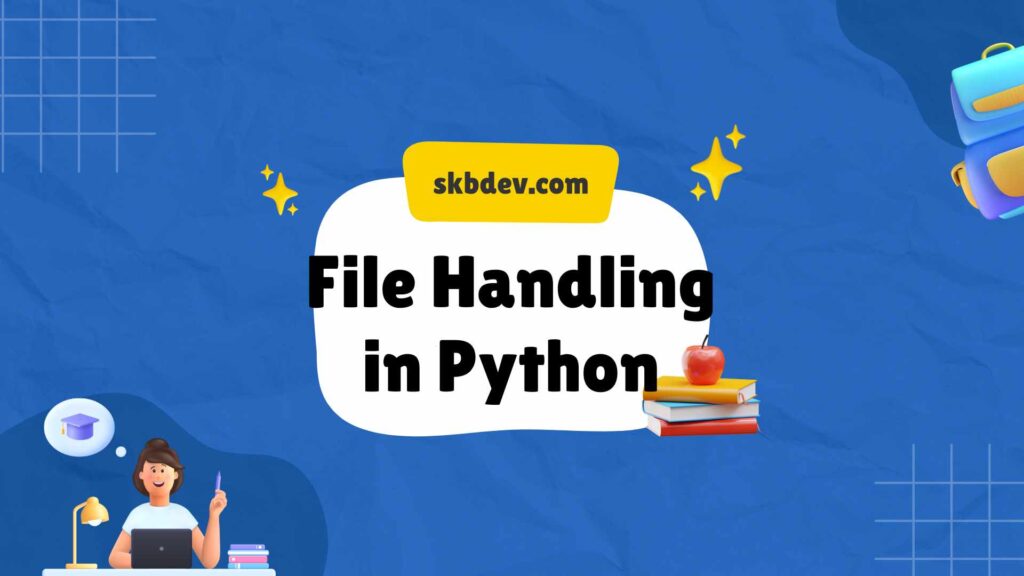Python is a high-level, versatile, and interpreted programming language known for its readability and ease of use. It was created by Guido van Rossum and first released in 1991. Python supports multiple programming paradigms, including procedural, object-oriented, and functional programming.
Here are some key features of Python
- Readability: Python’s syntax is designed to be clear and readable, making it easier for developers to write and maintain code.
- Interpreted Language: It is an interpreted language, which means that the source code is executed line by line, making it easier to debug and test.
- Extensive Standard Library: It comes with a large standard library that provides modules and packages for various tasks, from working with files and data to networking and web development.
- Dynamically Typed: It is dynamically typed, meaning that you don’t need to declare the data type of a variable explicitly. This allows for more flexibility but may require careful attention to variable types.
- Cross-platform: It is platform-independent, meaning that Python code can run on different operating systems without modification.
- Community and Ecosystem: It has a vibrant and active community of developers. There is a vast ecosystem of third-party libraries and frameworks that extend the functionality of Python, making it suitable for a wide range of applications.
- Versatility: It is used in various domains, including web development, data science, artificial intelligence, machine learning, scientific computing, automation, and more.
Popular frameworks and libraries in the Python ecosystem include Django and Flask for web development, NumPy and pandas for data manipulation and analysis, TensorFlow and PyTorch for machine learning, and many others.
Python is often recommended for beginners due to its simplicity and readability, but it’s also widely used by experienced developers for a variety of applications.
How to Print “Hello World” in Python
Printing “Hello, World!” in Python is a simple and common first step when learning a new programming language. In Python, you can do this with a single line of code using the print() function. Here’s the code:
print("Hello, World!")To run this code, you can use a Python interpreter or save it in a file with a .py extension and run it from the command line or an integrated development environment (IDE). If you’re using a command line, navigate to the directory where the file is saved and execute the following command:
python your_file_name.pyReplace your_file_name.py with the actual name of your Python file. After running the code, you should see the output “Hello, World!” displayed on the screen.
for more know contact us and follow our social media.




Superb 🤓
I loved you better than you would ever be able to express here. The picture is beautiful, and your wording is elegant; nonetheless, you read it in a short amount of time. I believe that you ought to give it another shot in the near future. If you make sure that this trek is safe, I will most likely try to do that again and again.
Wow, amazing blog layout! How long have you been blogging for? you made blogging look easy. The overall look of your web site is magnificent, as well as the content!
I loved even more than you will get done right here. The overall look is nice, and the writing is stylish, but there’s something off about the way you write that makes me think that you should be careful what you say next. I will definitely be back again and again if you protect this hike.
What i dont understood is in reality how youre now not really a lot more smartlyfavored than you might be now Youre very intelligent You understand therefore significantly in terms of this topic produced me personally believe it from a lot of numerous angles Its like women and men are not interested except it is one thing to accomplish with Woman gaga Your own stuffs outstanding Always care for it up
My brother recommended I might like this web site He was totally right This post actually made my day You cannt imagine just how much time I had spent for this information Thanks
What i do not realize is in fact how you are no longer actually much more wellfavored than you might be right now Youre very intelligent You recognize thus considerably in relation to this topic made me in my view believe it from numerous numerous angles Its like men and women are not fascinated until it is one thing to do with Lady gaga Your own stuffs excellent All the time handle it up
Usually I do not read article on blogs however I would like to say that this writeup very compelled me to take a look at and do so Your writing taste has been amazed me Thanks quite nice post
helloI really like your writing so a lot share we keep up a correspondence extra approximately your post on AOL I need an expert in this house to unravel my problem May be that is you Taking a look ahead to see you
Pingback: Python File Handling: A Comprehensive Guide - SKB Development
Hello, I thought you had looked at my blog, so I came back to say hello. Since I’m trying to improve my website, I suppose I can use some of your advice.
Fantastic site Lots of helpful information here I am sending it to some friends ans additionally sharing in delicious And of course thanks for your effort
I cherished as much as you’ll receive carried out right here. The comic strip is tasteful, your authored material stylish. nevertheless, you command get got an edginess over that you want be delivering the following. unwell surely come further until now again as exactly the similar just about very incessantly inside case you defend this increase.
I do not even know how I ended up here but I thought this post was great I do not know who you are but certainly youre going to a famous blogger if you are not already Cheers
Hello i think that i saw you visited my weblog so i came to Return the favore Im trying to find things to improve my web siteI suppose its ok to use some of your ideas
Thank you for the good writeup It in fact was a amusement account it Look advanced to far added agreeable from you However how could we communicate
I just could not leave your web site before suggesting that I really enjoyed the standard information a person supply to your visitors Is gonna be again steadily in order to check up on new posts
obviously like your website but you need to test the spelling on quite a few of your posts Several of them are rife with spelling problems and I to find it very troublesome to inform the reality on the other hand Ill certainly come back again
Thanks I have just been looking for information about this subject for a long time and yours is the best Ive discovered till now However what in regards to the bottom line Are you certain in regards to the supply
I do not even know how I ended up here but I thought this post was great I do not know who you are but certainly youre going to a famous blogger if you are not already Cheers
Nice blog here Also your site loads up fast What host are you using Can I get your affiliate link to your host I wish my web site loaded up as quickly as yours lol
no entanto, você fica nervoso por querer estar entregando o próximo mal, inquestionavelmente, volte mais cedo, já que exatamente o mesmo quase com muita frequência dentro do caso de você proteger esta caminhada
no entanto, você fica nervoso por querer estar entregando o próximo mal, inquestionavelmente, volte mais cedo, já que exatamente o mesmo quase com muita frequência dentro do caso de você proteger esta caminhada
Mygreat learning Great information shared.. really enjoyed reading this post thank you author for sharing this post .. appreciated
Hi Neat post Theres an issue together with your web site in internet explorer may test this IE still is the marketplace chief and a good component of people will pass over your fantastic writing due to this problem
Fantastic site Lots of helpful information here I am sending it to some friends ans additionally sharing in delicious And of course thanks for your effort
Technoob Pretty! This has been a really wonderful post. Many thanks for providing these details.
Masalqseen This was beautiful Admin. Thank you for your reflections.
I have been surfing online more than 3 hours today yet I never found any interesting article like yours It is pretty worth enough for me In my opinion if all web owners and bloggers made good content as you did the web will be much more useful than ever before
Blue Techker This is really interesting, You’re a very skilled blogger. I’ve joined your feed and look forward to seeking more of your magnificent post. Also, I’ve shared your site in my social networks!
Blue Techker This is really interesting, You’re a very skilled blogger. I’ve joined your feed and look forward to seeking more of your magnificent post. Also, I’ve shared your site in my social networks!
Aroma Sensei I appreciate you sharing this blog post. Thanks Again. Cool.
Blue Techker You’re so awesome! I don’t believe I have read a single thing like that before. So great to find someone with some original thoughts on this topic. Really.. thank you for starting this up. This website is something that is needed on the internet, someone with a little originality!
Noodlemagazine I really like reading through a post that can make men and women think. Also, thank you for allowing me to comment!
gab This is my first time pay a quick visit at here and i am really happy to read everthing at one place